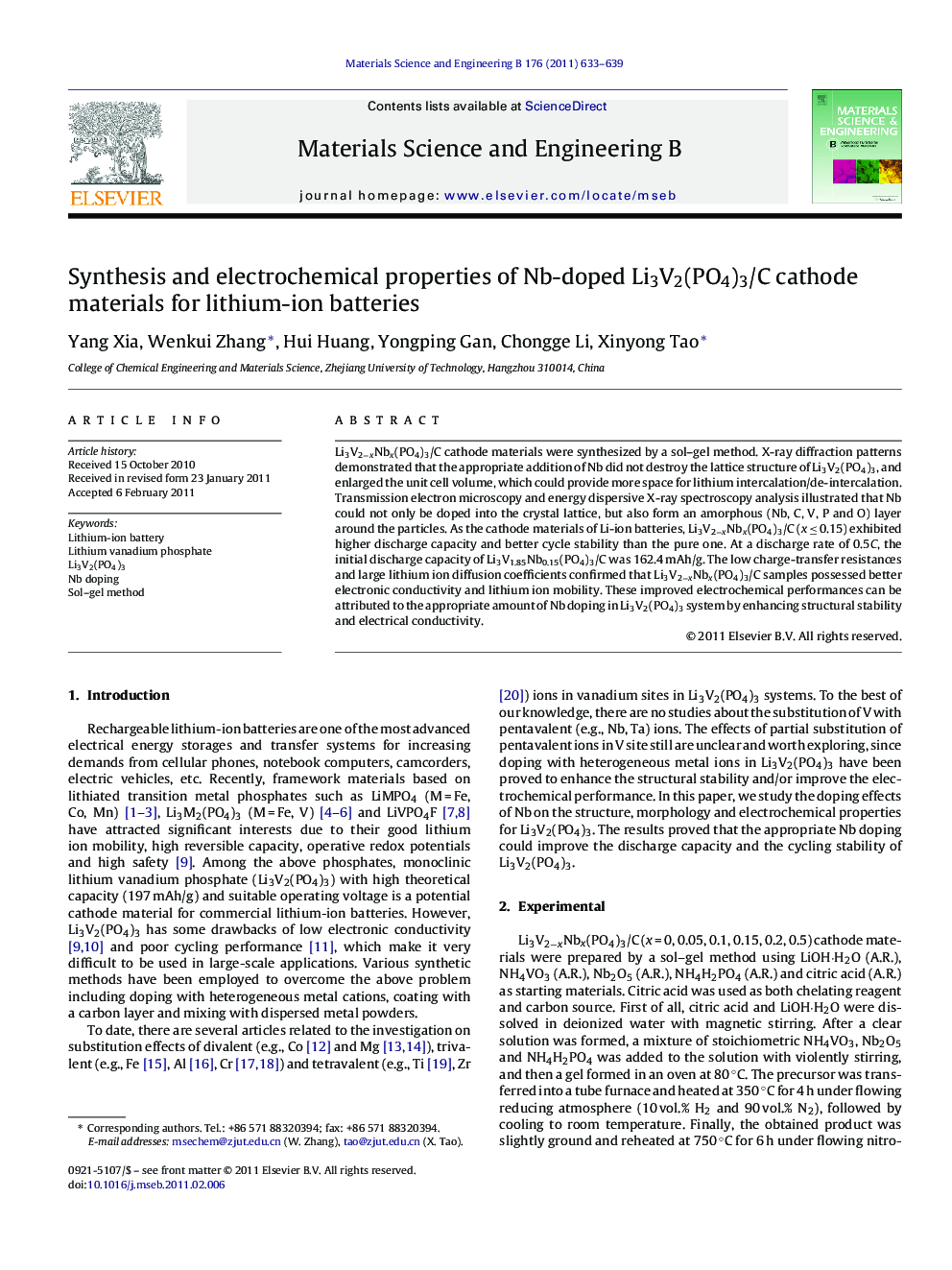| Article ID | Journal | Published Year | Pages | File Type |
|---|---|---|---|---|
| 1529223 | Materials Science and Engineering: B | 2011 | 7 Pages |
Li3V2−xNbx(PO4)3/C cathode materials were synthesized by a sol–gel method. X-ray diffraction patterns demonstrated that the appropriate addition of Nb did not destroy the lattice structure of Li3V2(PO4)3, and enlarged the unit cell volume, which could provide more space for lithium intercalation/de-intercalation. Transmission electron microscopy and energy dispersive X-ray spectroscopy analysis illustrated that Nb could not only be doped into the crystal lattice, but also form an amorphous (Nb, C, V, P and O) layer around the particles. As the cathode materials of Li-ion batteries, Li3V2−xNbx(PO4)3/C (x ≤ 0.15) exhibited higher discharge capacity and better cycle stability than the pure one. At a discharge rate of 0.5C, the initial discharge capacity of Li3V1.85Nb0.15(PO4)3/C was 162.4 mAh/g. The low charge-transfer resistances and large lithium ion diffusion coefficients confirmed that Li3V2−xNbx(PO4)3/C samples possessed better electronic conductivity and lithium ion mobility. These improved electrochemical performances can be attributed to the appropriate amount of Nb doping in Li3V2(PO4)3 system by enhancing structural stability and electrical conductivity.
